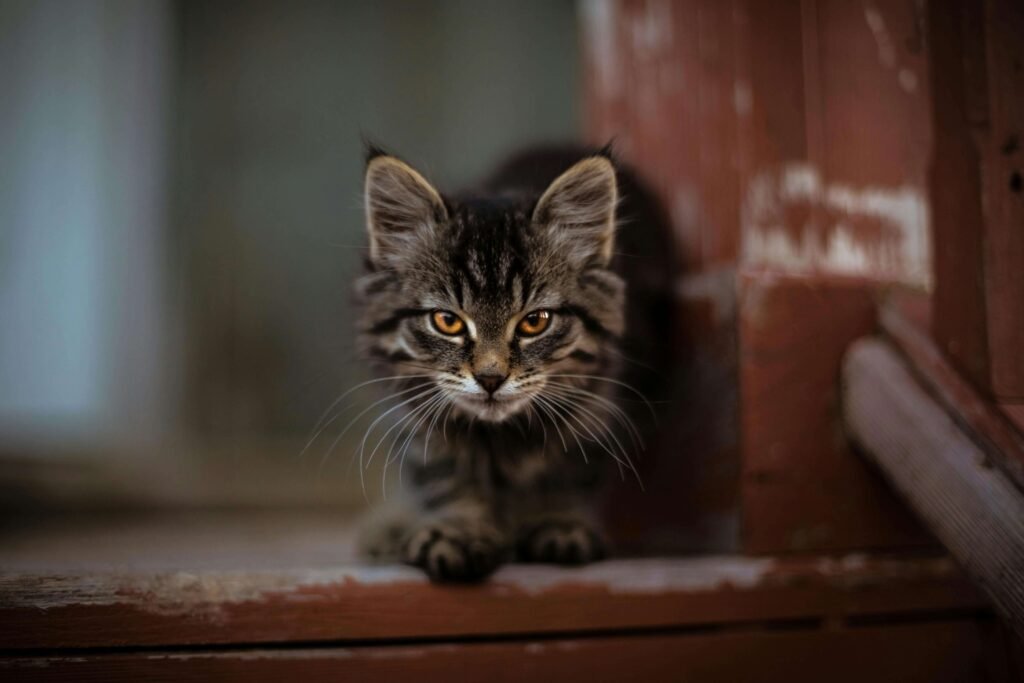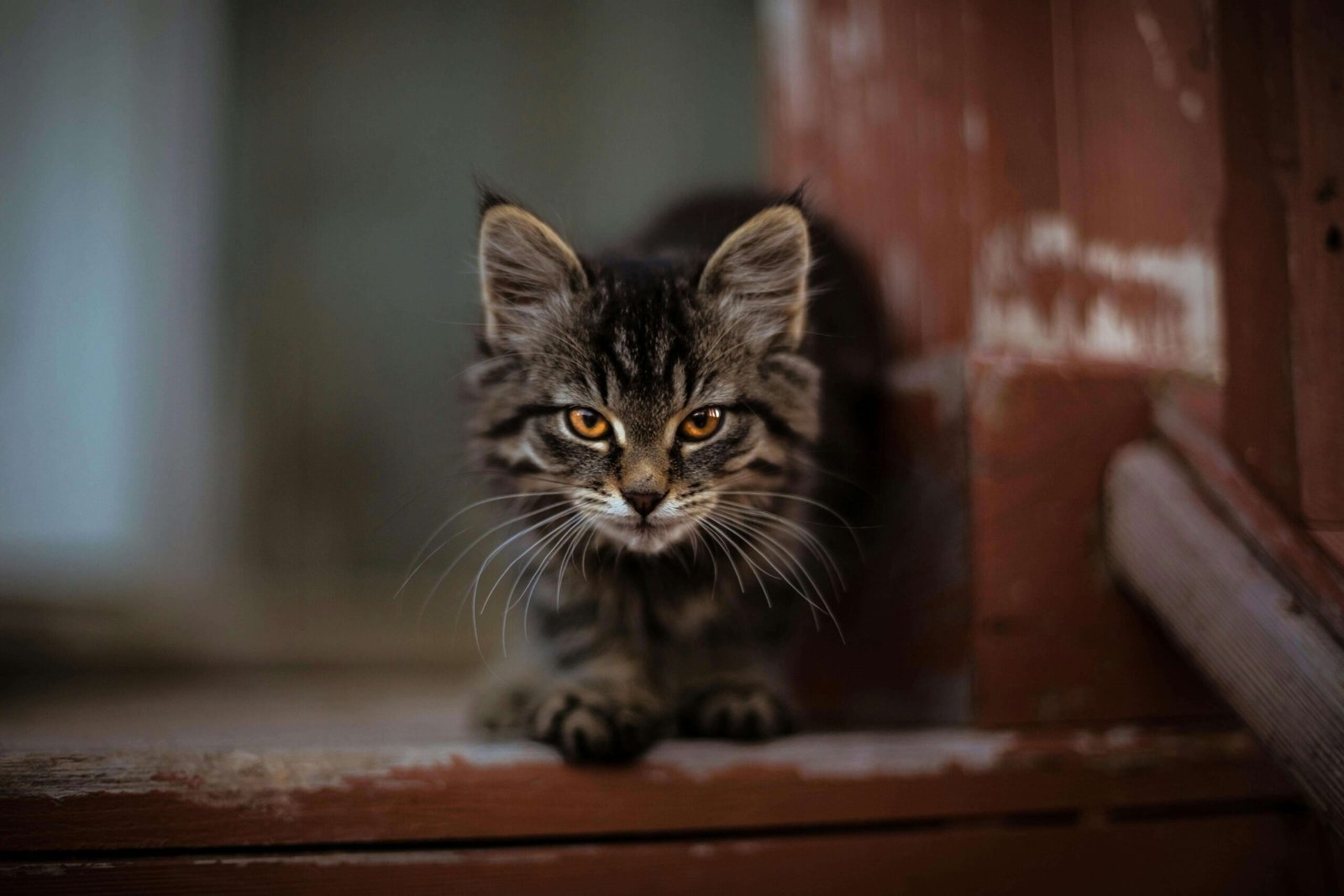Why Is My Cat Breathing Fast While Resting?
Cats are known for their calm and composed demeanor, so when you notice your feline friend breathing rapidly while resting, it can be alarming. Rapid breathing, also known as tachypnea, may indicate a range of issues—from harmless stress to serious medical conditions. As a responsible cat owner, understanding the potential causes of fast breathing and knowing how to respond can make all the difference in ensuring your cat’s well-being. In this blog post, we’ll explore why your cat might be breathing fast while resting, how to identify abnormal breathing patterns, and what steps to take if you notice this behavior.
Common Causes of Fast Breathing in Cats
There are several reasons why your cat might be breathing faster than usual while resting. Here are some of the most common causes:
Stress or Anxiety : Changes in the environment, loud noises, or unfamiliar people can trigger rapid breathing.
Heat Exposure : Overheating or being in a hot environment can cause your cat to pant in an attempt to cool down.
Respiratory Infections : Conditions like pneumonia or upper respiratory infections can lead to labored or rapid breathing.
Heart Disease : Cardiac issues can impair oxygen flow, causing your cat to breathe faster to compensate.
Pain or Discomfort : Underlying pain from injuries or illnesses can manifest as rapid breathing.
While some causes are temporary and harmless, others require immediate veterinary attention to ensure your cat’s health isn’t at risk.
How to Identify Abnormal Breathing Patterns
Recognizing abnormal breathing is the first step toward addressing the issue. Here’s what to look for:
Increased Respiratory Rate : A normal resting respiratory rate for cats is 20-30 breaths per minute; anything higher may be concerning.
Labored Breathing : Watch for signs like open-mouth breathing, flared nostrils, or exaggerated chest movements.
Shallow Breaths : Short, rapid breaths can indicate difficulty in taking full, deep breaths.
Audible Sounds : Wheezing, coughing, or raspy sounds during breathing may signal respiratory distress.
Behavioral Changes : Lethargy, hiding, or reluctance to move can accompany abnormal breathing patterns.
If you notice any of these signs, it’s important to monitor your cat closely and seek veterinary advice if the issue persists.
Check this guide 👉Understanding Cat Breathing Fast: Best 7 Expert Tips!
Check this guide 👉The Curious Case of Heavy Breathing in Cats: Best 7 Tips!

Signs of Normal Breathing | Signs of Abnormal Breathing |
|---|---|
Steady, quiet breaths | Open-mouth breathing or panting |
Respiratory rate of 20-30 breaths/min | Breathing rate over 40 breaths/min |
Relaxed body posture | Labored or exaggerated chest movements |
No audible breathing sounds | Wheezing, coughing, or raspy sounds |
Consistent breathing pattern | Irregular or shallow breathing |
What to Do If Your Cat Is Breathing Fast
If you notice your cat breathing rapidly while resting, here are some steps you can take to address the situation:
Stay Calm : Your cat can sense your emotions, so staying calm will help keep them relaxed.
Check the Environment : Ensure the room is cool and well-ventilated, especially if heat exposure might be the cause.
Observe for Other Symptoms : Look for additional signs like lethargy, coughing, or changes in appetite.
Limit Stressors : Remove potential stress triggers, such as loud noises or unfamiliar pets, from your cat’s surroundings.
Contact Your Vet : If the rapid breathing persists or is accompanied by other symptoms, seek professional advice promptly.
Taking these steps can help you determine the severity of the issue and ensure your cat receives appropriate care.
Preventive Measures to Reduce Breathing Issues
Preventing rapid breathing starts with maintaining your cat’s overall health. Here are some tips to reduce the risk of breathing problems:
Maintain a Safe Environment : Keep your home free of hazards like toxic plants or small objects that could cause choking.
Monitor Weight : Obesity can strain the respiratory system, so ensure your cat stays at a healthy weight.
Regular Vet Checkups : Routine visits help catch potential health issues early before they escalate.
Provide Mental Stimulation : Reducing stress through play and enrichment can prevent anxiety-related breathing issues.
Avoid Extreme Temperatures : Protect your cat from overheating or exposure to cold drafts.
By implementing these preventive measures, you can help your cat stay healthy and minimize the risk of respiratory problems.
Signs Your Cat May Be in Respiratory Distress
If your cat is breathing rapidly while resting, it’s important to watch for other signs of respiratory distress. These symptoms can help you determine the severity of the issue.
Open-Mouth Breathing : Cats rarely pant or breathe through their mouths unless they’re struggling for air.
Blue or Pale Gums : Discolored gums may indicate a lack of oxygen in the bloodstream.
Extended Neck Position : A cat stretching its neck to breathe may be trying to ease airflow into the lungs.
Lethargy or Weakness : Extreme tiredness or inability to move can signal a serious respiratory problem.
Coughing or Gagging : Persistent coughing or gagging may point to an obstruction or infection.
Recognizing these signs early can help you seek prompt veterinary care and prevent further complications.
How to Create a Calm Environment for Your Cat
Stress and anxiety can contribute to rapid breathing in cats, so creating a calm environment is essential for their well-being. Here’s how you can help:
Provide a Safe Space : Offer a quiet, secluded area where your cat can retreat when feeling overwhelmed.
Use Calming Scents : Products like pheromone diffusers or lavender sprays can soothe anxious cats.
Minimize Loud Noises : Keep noise levels low and avoid sudden, startling sounds like loud music or vacuum cleaners.
Stick to a Routine : Cats thrive on predictability, so maintain consistent feeding, play, and sleep schedules.
Limit Interactions with Strangers : Avoid exposing your cat to unfamiliar people or pets that might cause stress.
By reducing stressors, you can help your cat feel more secure and reduce the likelihood of stress-related breathing issues.
When to Seek Emergency Veterinary Care
While some cases of rapid breathing can be managed at home, others require immediate attention. Here’s when you should contact your vet right away:
Persistent Rapid Breathing : If your cat’s breathing doesn’t return to normal after removing stressors or cooling them down.
Collapse or Unresponsiveness : A cat that collapses or seems unresponsive needs urgent medical care.
Audible Breathing Sounds : Wheezing, honking, or raspy noises during breathing can indicate a blockage or infection.
Swelling or Trauma : Any visible swelling, injury, or trauma to the chest or throat requires immediate evaluation.
Changes in Behavior : Sudden aggression, hiding, or refusal to eat alongside rapid breathing can signal a serious issue.
Knowing when to act quickly can make all the difference in ensuring your cat receives the care they need to recover safely.
Frequently Asked Questions About Cat Breathing
Is it normal for cats to breathe fast sometimes?
Occasional rapid breathing due to stress or heat is normal, but persistent fast breathing should be evaluated by a vet.
How can I check my cat’s respiratory rate?
Count the number of breaths your cat takes in one minute while they’re resting; normal is 20-30 breaths per minute.
Can allergies cause rapid breathing in cats?
Yes, allergies or asthma can lead to respiratory distress and rapid breathing.
Should I worry if my cat pants after exercise?
Occasional panting after vigorous play is normal, but frequent or prolonged panting requires attention.
What should I do if my cat’s gums are blue?
Blue gums indicate a lack of oxygen and require immediate emergency veterinary care.
Ensuring Your Cat’s Respiratory Health
Rapid breathing in cats while resting can be a sign of various issues, ranging from minor stress to serious medical conditions. By understanding the potential causes, recognizing abnormal patterns, and taking prompt action, you can ensure your cat remains healthy and comfortable. Remember, your veterinarian is your best resource for diagnosing and treating any breathing concerns. With love, care, and vigilance, you can support your feline companion’s respiratory health and enjoy many happy years together.
Understanding Cryptosporidium in Cats: Best 7 Expert Tips! – Spot symptoms, treat safely, and stop parasite spread in your home.
Understanding Cryptosporidium in Dogs: Best 7 Expert Tips! – Learn symptoms, treatment & prevention for this stubborn gut parasite.
Understanding Syringomyelia in Cats: Best 7 Expert Tips! – Recognize signs, manage pain, and support your cat’s neurological health with vet-backed guidance.
Understanding Syringomyelia in Dogs: Best 7 Expert Tips! – Expert insights on symptoms, MRI diagnosis, pain management & quality of life.





